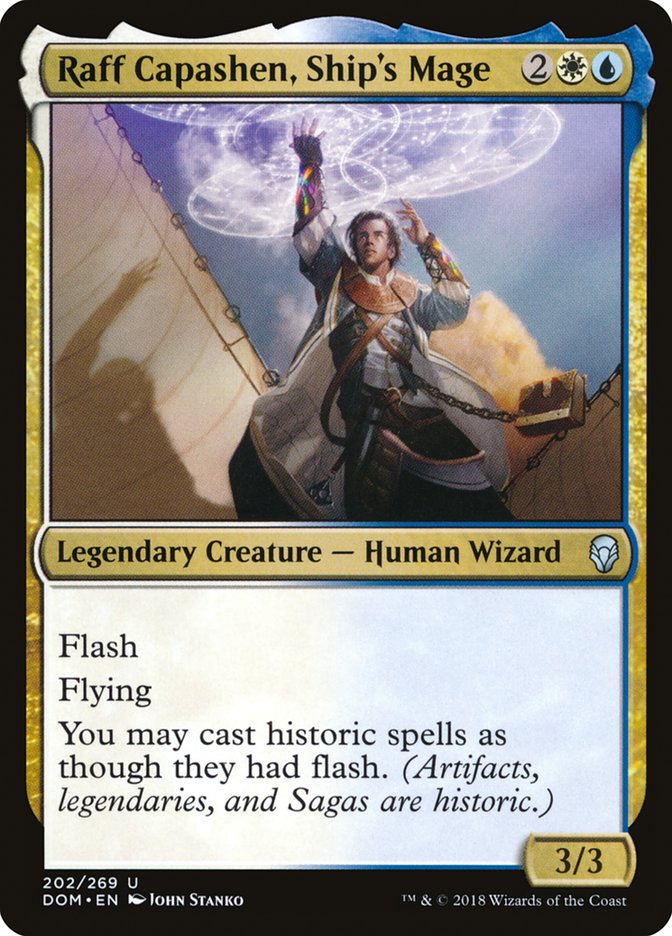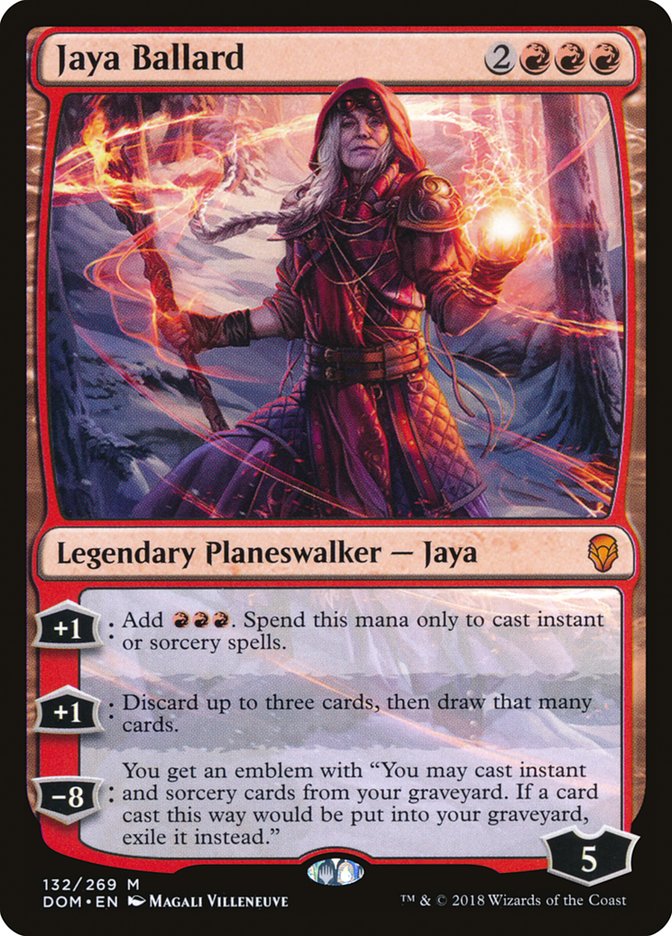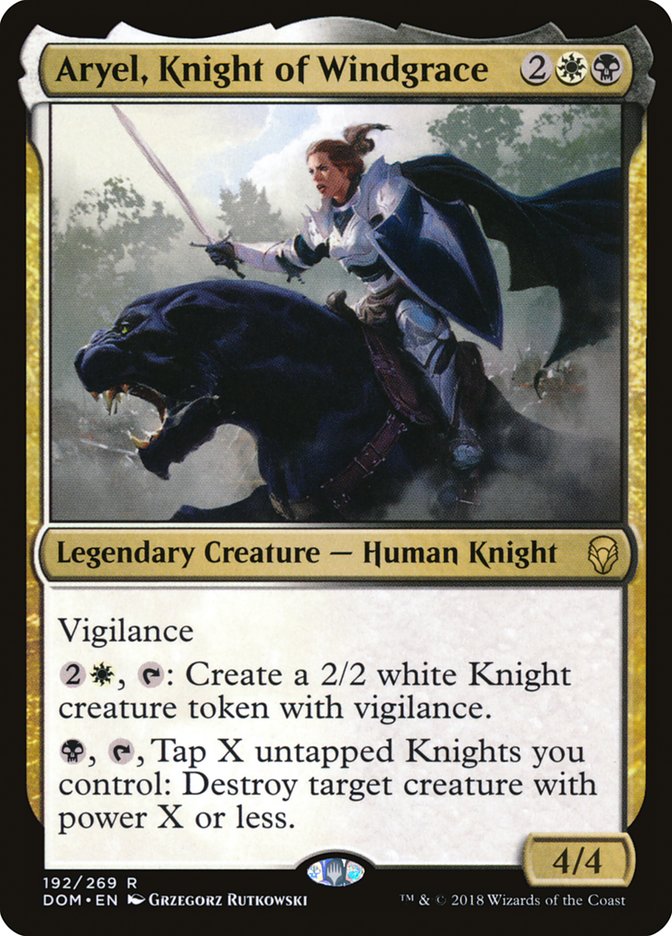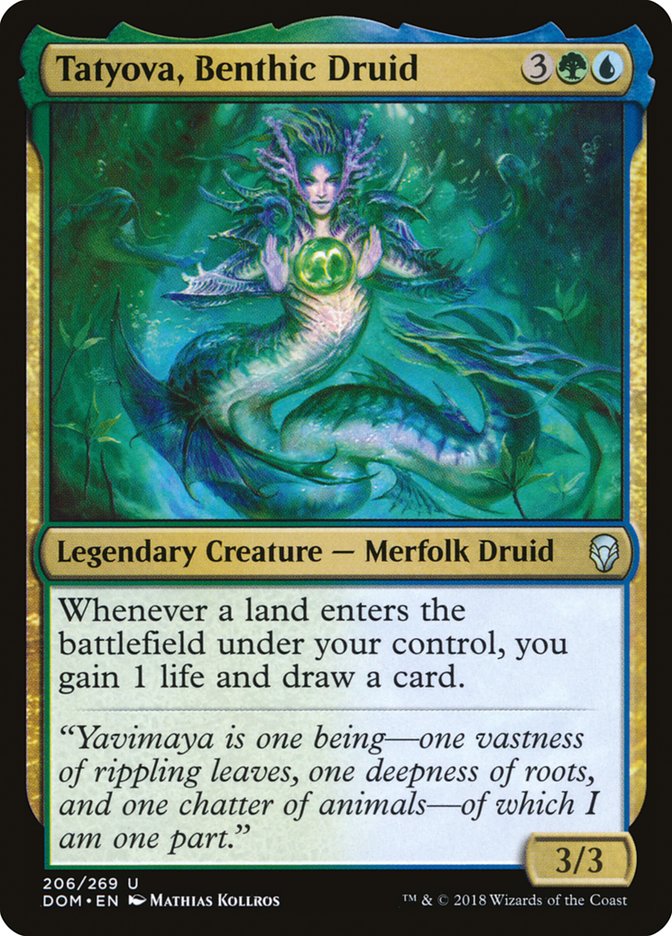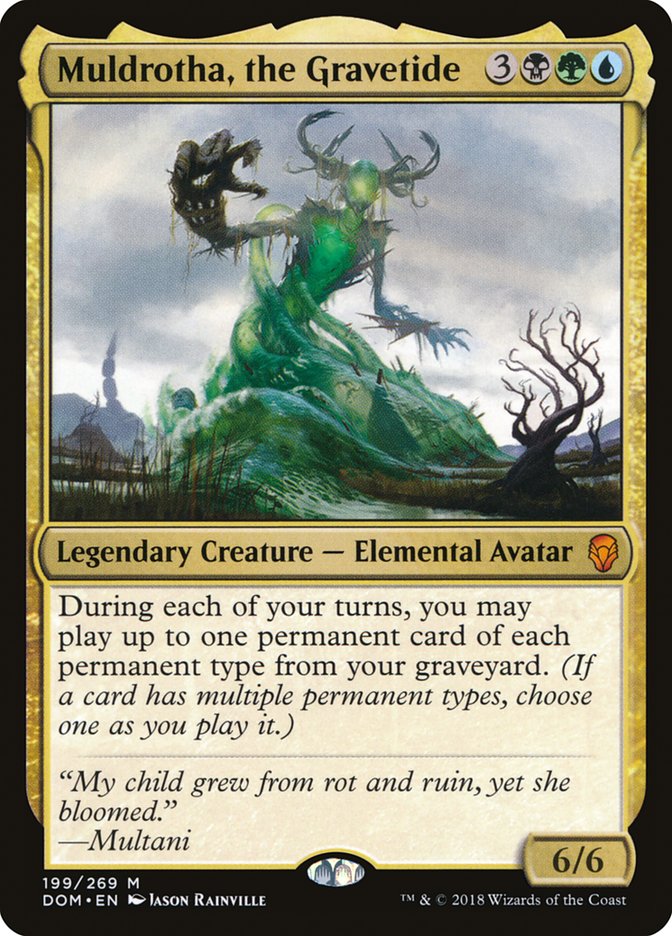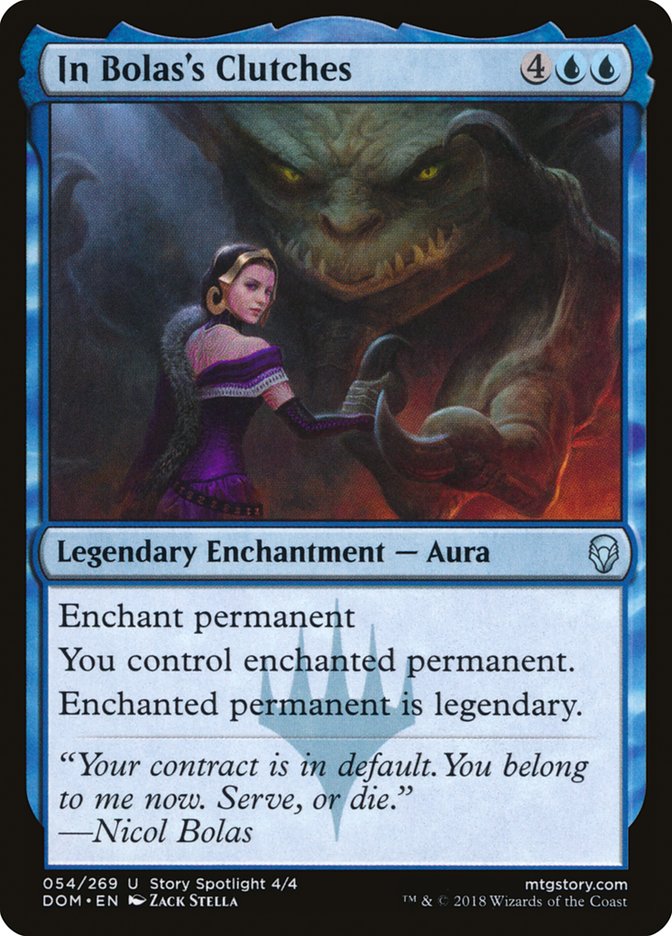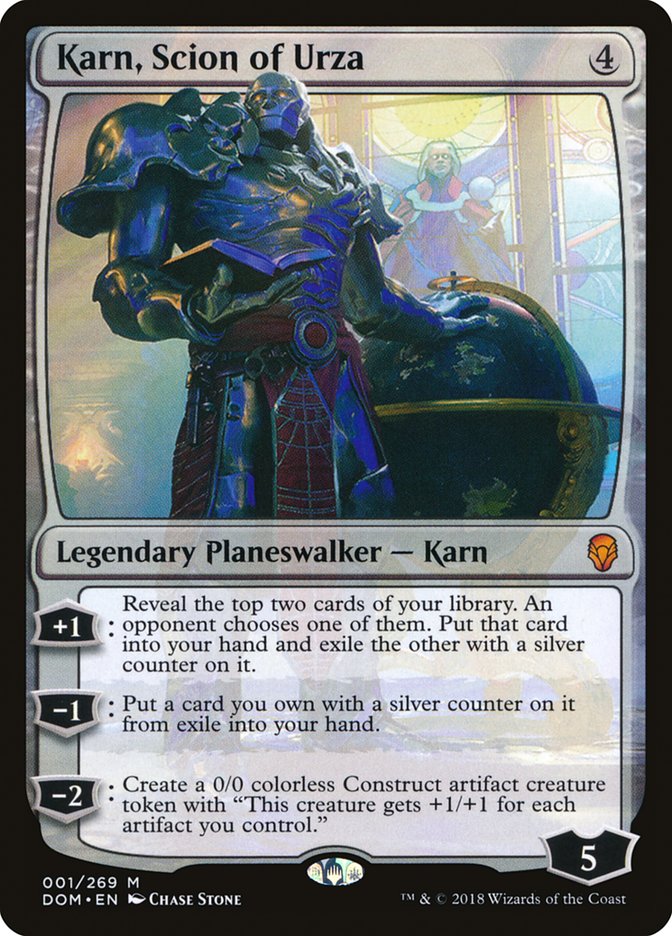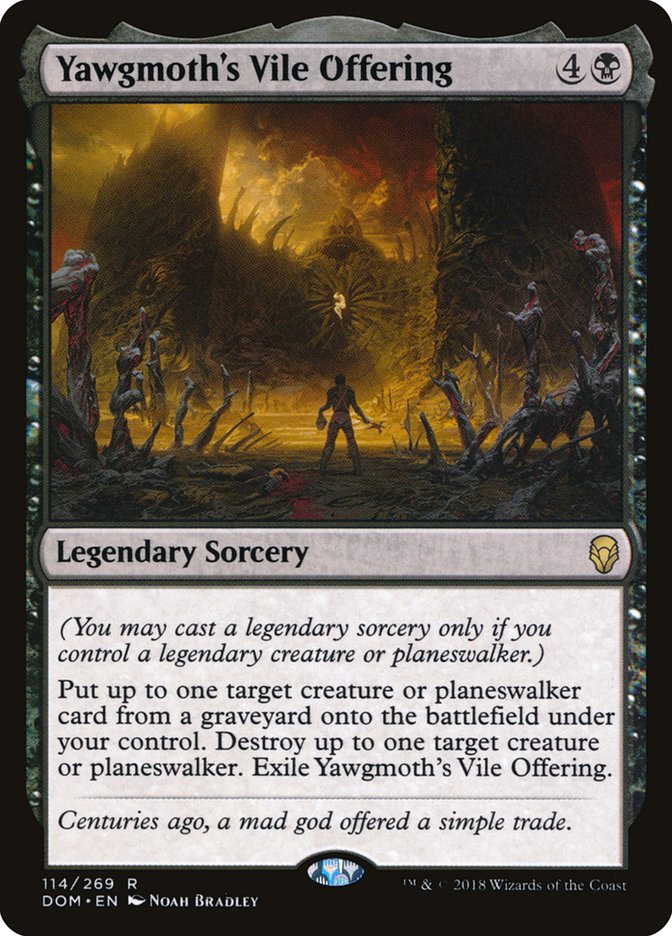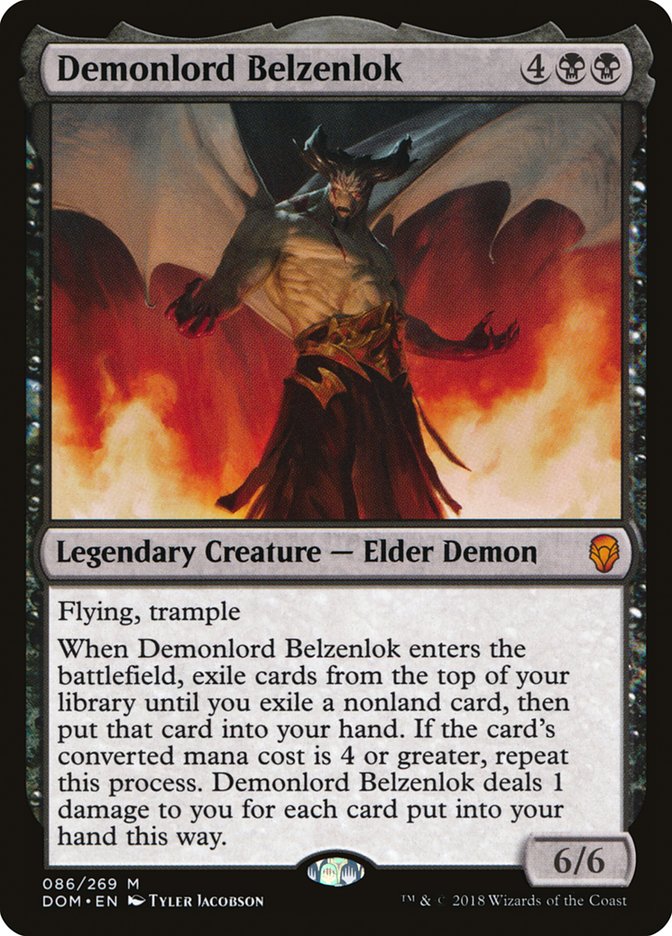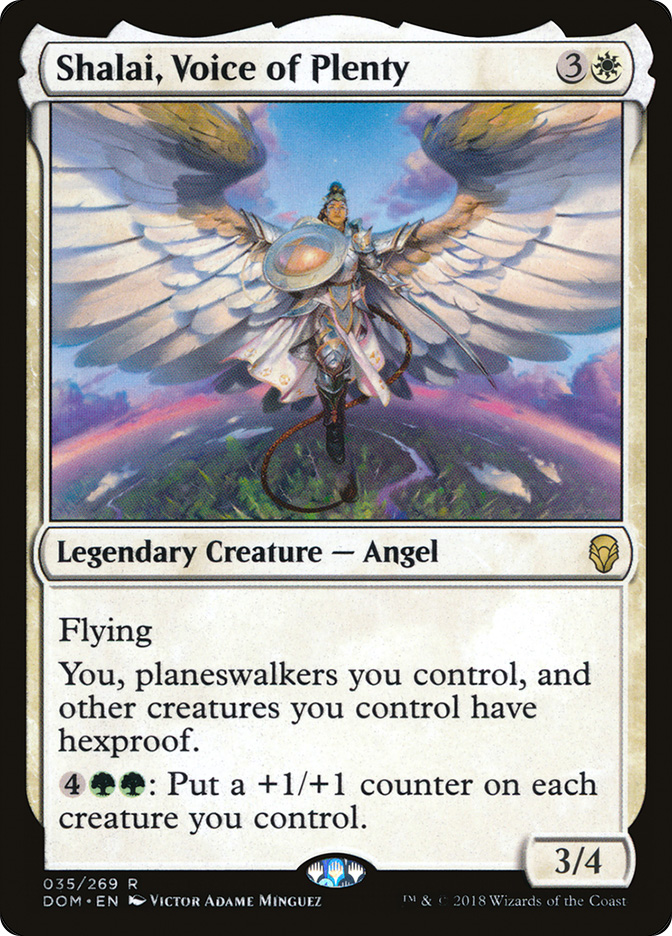After years of trying, Standard and Commander finally had a baby. They named it Brawl.
…Okay, I suppose that’s not really how it happened. But we don’t need a paternity test to see that Brawl is a winning combination of its parent formats. It offers the focused card pool and shifting metagame of Standard combined with the multiplayer mayhem and casual atmosphere of Commander. And as far as I know, Brawl is totally potty trained.
What better way to welcome a newborn format than with a set like Dominaria? New legendary creatures, powerful planeswalkers, and a Frog Spirit—we couldn’t ask for more. Let’s take a closer look at the ten best Brawl cards from Dominaria. (Spoiler: Yargle did not make the list.)
10. Raff Capashen, Ship’s Mage
You’ve got to admire a dude who chains a book to his belt. But fashion choices aside, Raff Capashen, Ship’s Mage’s in-game effect is pretty darn impressive.
Casting legendary creatures at instant speed is good, but Raff can do even better. Notice that he works with all legendary cards, not just legendary creatures. You could cast In Bolas’s Clutches mid-combat to steal a big blocker from another player. Or, better yet, you could cast Karn’s Temporal Sundering on an opponent’s end step. Inserting an extra turn between two opponents’ turns could prove game-changing, especially when no one’s expecting it.
Book it.
9. Jaya Ballard
Jaya Ballard’s power is entirely contingent on your ability to build around her. In a format like Brawl where one quite literally builds around a specific card, I think she’ll thrive.
Imagine, for example, casting Fight with Fire or Jaya’s Immolating Inferno using Jaya’s first ability. Or try discarding Warcry Phoenix or Squee, the Immortal with her second ability. And with up to six loyalty on the turn you cast her, she has a legitimate shot of going ultimate.
Thanks for the free Past in Flames, Jaya!
I’m already in for Aryel, Knight of Windgrace as a four-mana 4/4. In addition, you get two excellent abilities, either of which can be activated even after you’ve attacked. Aryel’s vigilance also gains added importance in a format like Brawl; it allows you to block or threaten blocks against multiple opponents.
The thing I like most about Aryel is her versatility. You could certainly pack other Knights such as Champion of Dusk; Vona, Butcher of Magan; and Elenda, the Dusk Rose into your 59. But since she generates Knights on her own, Aryel isn’t as linear as other tribal build-arounds tend to be. You could certainly try a tokens or battlefield control theme instead.
Tatyova, Benthic Druid might be the most quietly powerful card in Brawl. Like its parent format Commander, Brawl is a format where most (if not all) decks want to ramp and draw cards. Tatyova rewards the former with the latter, plus she throws in some bonus points of life.
I’ve got my eyes on The Mending of Dominaria for my Tatyova deck. Hitting the third chapter with five or six lands in my graveyard sounds busted. I’m also interested in Kamahl’s Druidic Vow, Llanowar Scout, and Amonkhet’s Kefnet the Mindful. Also, I appreciate that landfall continues to return in many sets, even if it’s not actually called “landfall.”
Muldrotha gives new meaning to the phrase “roll tide.” For starters, it’s the only commander in the format with a Sultai color identity. As such, a Muldrotha deck has access to card combinations other decks don’t.
Want The Scarab God and Vraska, Relic Seeker in the same 59? Me too.
But beyond its colors, Muldrotha, the Gravetide is just plain powerful. Repeatable card advantage is essential in multiplayer formats, and Muldrotha certainly offers it. Sagas, in particular, look great in this deck, since you can recast them from your graveyard after the third chapter resolves.
However, Muldrotha does not come without its drawbacks. Mana fixing is poor in the current Brawl format. That means triple-color commanders like the Gravetide might prove difficult to cast. Don’t say I didn’t warn you!
In a format where every player brings a powerful permanent to the table, In Bolas’s Clutches will always have juicy targets. But why limit ourselves to creatures and planeswalkers? I recommend stealing a Saga for some free value. And for dramatic effect, feel free to quote the flavor text when casting this card.
Everybody loves Karn, and I can see why. He’ll be good in Standard, but I think he’ll be even better in Brawl.
Let’s start with Karn’s +1 ability. In a traditional one-on-one game, your opponent will always give you the worse of the two cards. However, in a multiplayer environment, you choose who chooses the card. If you’ve got an ally at the table, they very well might give you the card you want.
Or here’s another scenario: an opponent casts The Scarab God. Panic ensues. No one has an answer for it. Things are looking grim. On your turn, you activate Karn and reveal two cards: Swamp and Vraska’s Contempt. If everyone else at the table wants that Scarab God gone, you’re almost guaranteed the Contempt.
Oddly enough, Karn’s colorless identity is both freeing and limiting for Brawl players. On the one hand, he can slot into the 59 of any Brawl deck. On the other, his colorlessness makes him effectively unusable as a commander. By my count, there are only nineteen colorless lands in the format, which isn’t enough to support a deck. Nonetheless, I’d expect to see Karn in maindecks everywhere.
Yawgmoth’s Vile Offering has an impact at every stage of the game. Notice that the reanimation clause looks at any graveyard, not just your own. In a multiplayer format, that means you’ll almost always find a worthy target in someone’s graveyard. Finding a creature or planeswalker to kill should be even easier.
I’m definitely not refusing this offer.
Any creature with the type line “Elder Demon” must be good. Fortunately, Demonlord Belzenlok doesn’t disappoint. He provides a nice body and excellent card advantage for just six mana. Also, fun fact: A young Belzenlok appeared in the “Night on Bald Mountain” sequence from Fantasia.
I strongly recommend playing Ol’ Belzy as your commander. Doing so allows you to cast him again even after he dies, thereby retriggering his enters-the-battlefield effect and drawing additional cards. Since Brawl is a 30-life format, that life loss usually won’t hurt as much as it might otherwise.
Furthermore, playing Belzenlok as your commander means you’re playing a monocolored deck. While that might sound like a constraint, it’s actually an advantage. Remember how manabases are a bit shaky in Brawl? Not so with a mono-black deck. While other players struggle to find their second or third color, you’ll be casting a shirtless Elder Demon.
While there are plenty of cards worthy of the top spot, I believe Shalai, Voice of Plenty will go down as the best Brawl card from Dominaria.
For starters, a 3/4 flying creature for four mana is rock solid. In addition, Shalai’s next ability provides legitimate protection for your entire team. If you follow up your Turn 4 Shalai with a Turn 5 Lyra Dawnbringer, for instance, your opponents now need two targeted removal spells to defeat Lyra (which they totally want to do). That’s already a potent ability and it’s not even her best.
Shalai’s biggest draw is her 4GG activated ability. It works best when you go wide, and I think going wide is one of the best ways to win in this format. That’s because Standard-legal sweepers these days are generally clunky, expensive, or conditional. And when sweepers aren’t great, go-wide strategies get better.
Also, don’t overlook the green in Shalai’s color identity. Though she only costs white mana to cast, the green activation effectively makes her a Selesnya commander. This mitigates the issue of poor mana fixing while still providing an additional color for deckbuilding.
***
Welcome to the world, Brawl! I’m certain these ten Dominaria cards will be fun toys for a newborn format!


